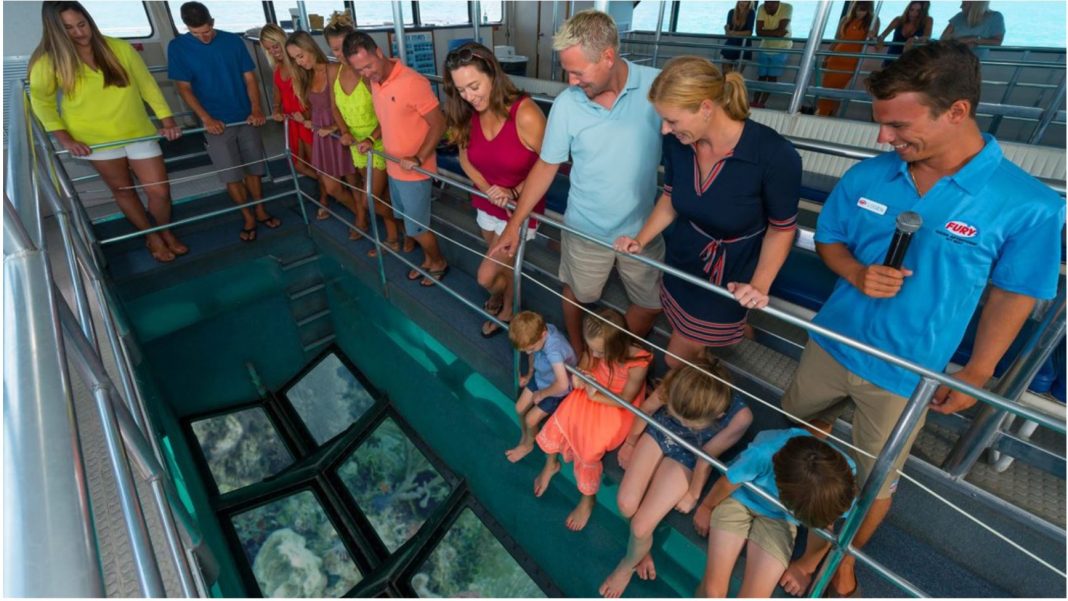Submitted by South Sound GREEN
In the face of COVID-19 and recent stay at home order, parents and guardians may find themselves looking for activities that not only keep students engaged, but also provide information about local environmental science and concerns. In our South Sound GREEN Home Based Science Project series, we will introduce and demonstrate various hands-on and at-home activities for children of all ages to do either indoors or outside!
 This week, we are partnering with Stream Team to celebrate World Oceans Day and learn how to build an underwater viewer at home!
This week, we are partnering with Stream Team to celebrate World Oceans Day and learn how to build an underwater viewer at home!
Underwater Explorers
Grade Level: K-5th
Materials
- Plastic bottle
- Clear plastic wrap
- Rubber band
- Scissors
- Pen/paper (for recording observations)
Background
 As we discussed in our Turbidity Trials article, water can become murky and cloudy when it has a lot of particles floating around in it. In areas with really low levels of turbidity (imagine the crystal clear waters of the Caribbean and Hawaii), we can see deep into the water fairly easily. In places with high turbidity, such as Puget Sound, we can only really see whatever is at the top of the water column, meaning that any features or animals that live in deeper water usually go unseen from the surface.
As we discussed in our Turbidity Trials article, water can become murky and cloudy when it has a lot of particles floating around in it. In areas with really low levels of turbidity (imagine the crystal clear waters of the Caribbean and Hawaii), we can see deep into the water fairly easily. In places with high turbidity, such as Puget Sound, we can only really see whatever is at the top of the water column, meaning that any features or animals that live in deeper water usually go unseen from the surface.
The region at the top of the water column that receives sunlight is called the photic zone. This is an area where phytoplankton (plant plankton) and other plants can live, because they can get enough sunlight for photosynthesis. Because plants can live in this zone, zooplankton (animal plankton) and other small animals will come to this zone to eat. Predators, on the other hand, may want to stay beneath the photic zone, where there is very little light available and it is difficult to see things. Being able to get underwater and see beneath the photic zone can reveal entire ecosystems that would be invisible otherwise!
Light refraction also makes it tricky to observe things underwater while being out of the water. Refraction bends light in ways that distorts or changes the appearance of something. An easy experiment to do at home to show this is to fill a glass of water, and then watch from the side as you dip in a pencil or a piece of silverware. What happens to the item? It looks bent! When we watch fish or other organisms in the water, they may appear blurry or misshapen. The only way to correctly observe these organisms is to be in the water as well!
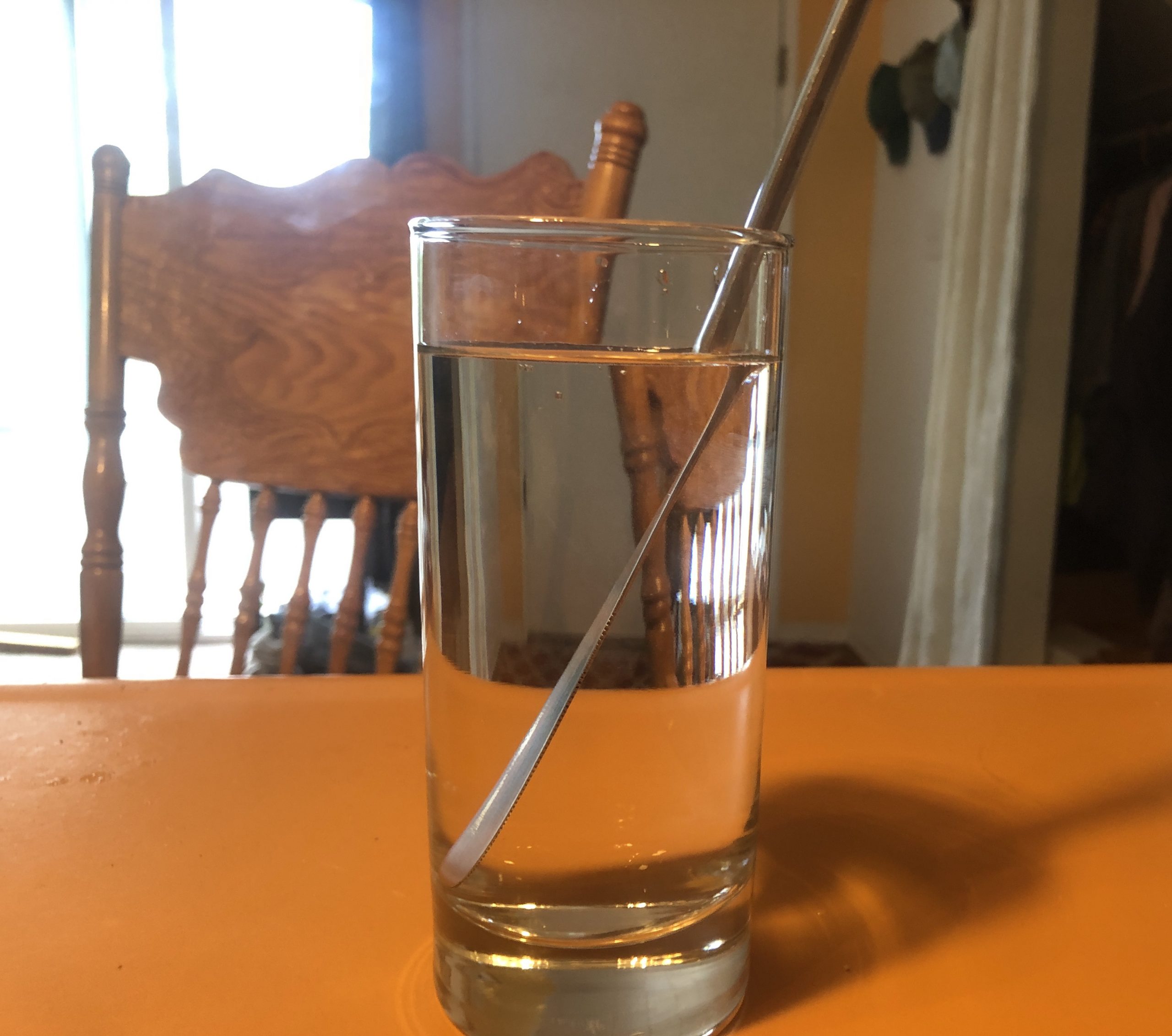
To observe the world beneath the photic zone, we can make an underwater viewer!
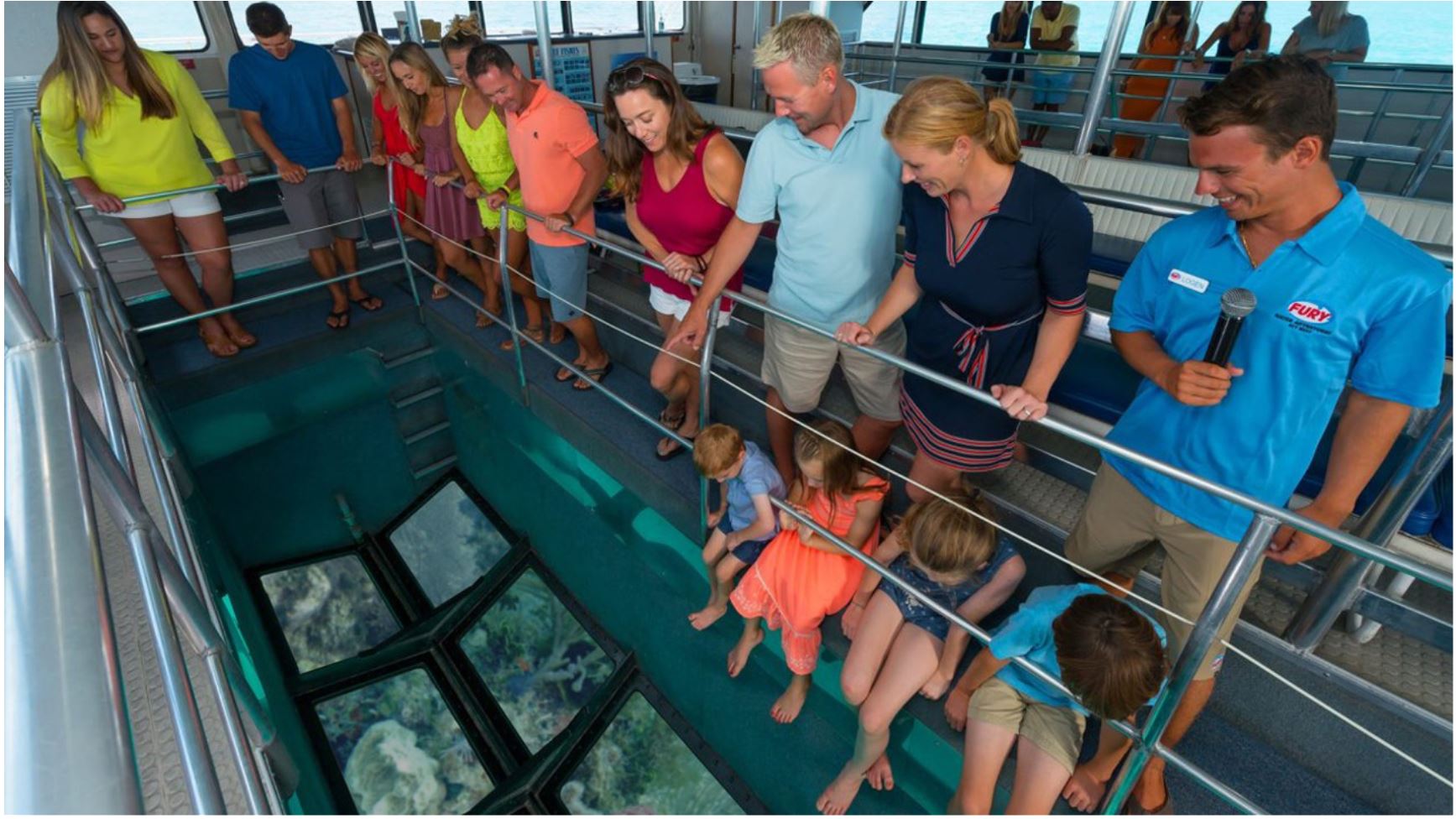
Procedure:
- Cut a hole in the bottom of your plastic bottle using your scissors (with the assistance of a parent or guardian). Try to be as level as possible making the cut.
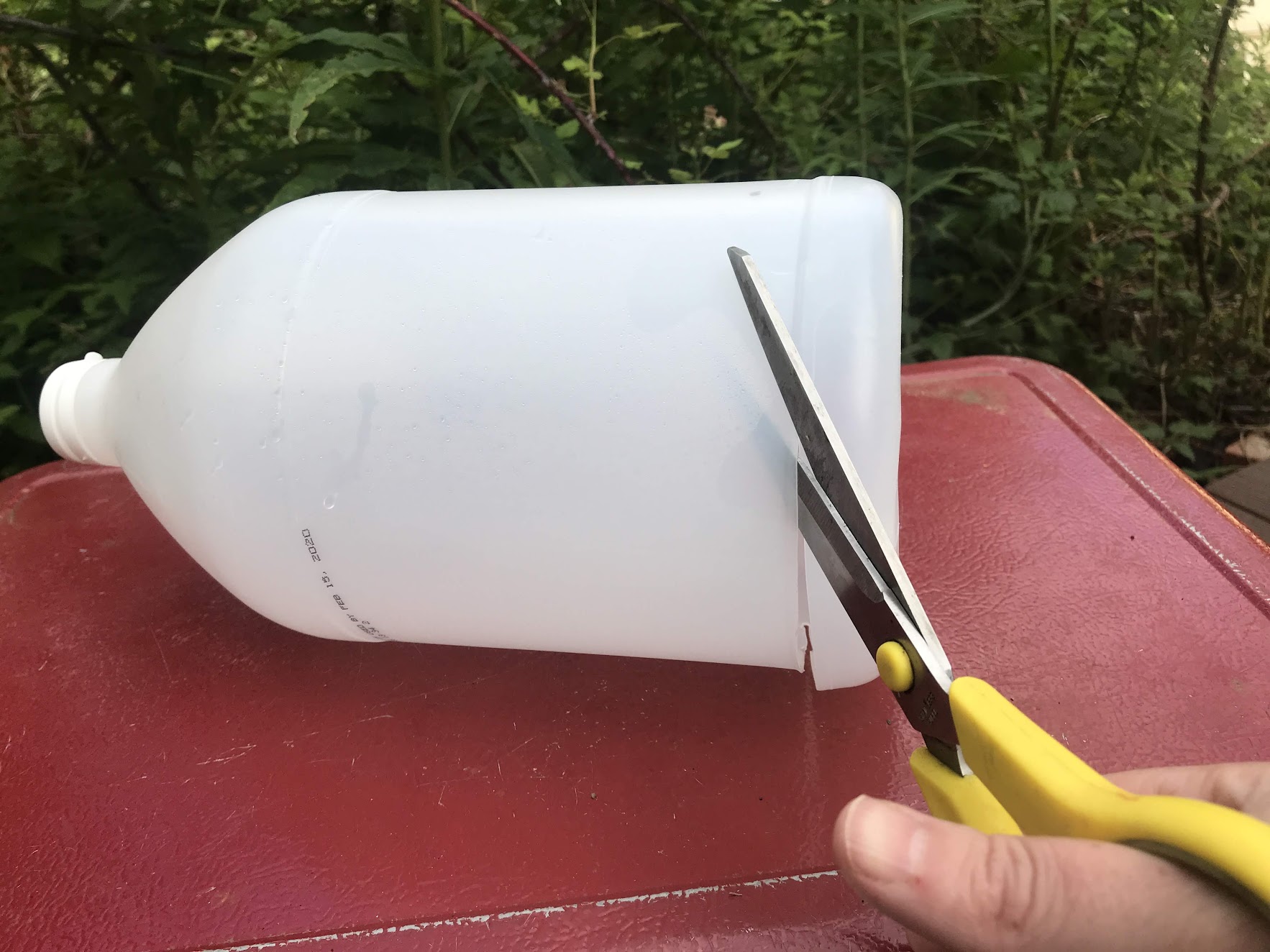
- Cover the opening with a piece of plastic wrap. Stretch the wrap tight so that the surface is flat, like a drum.
- Use a rubber band around the plastic wrap to keep it in place. Make sure the rubber band is tight enough to make the wrap waterproof!
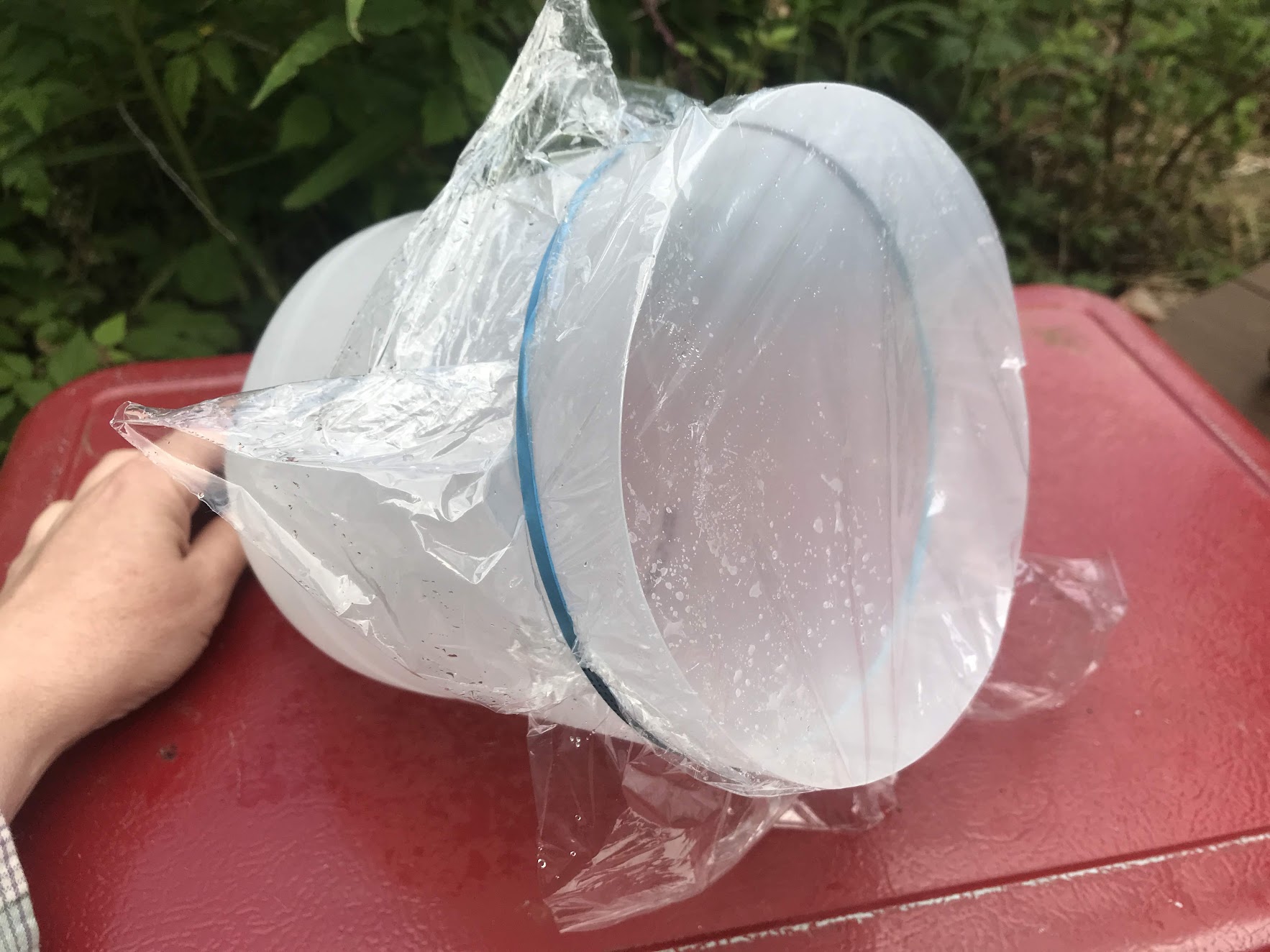
- Take your underwater viewer to a local beach or lake to test it out. Lower the viewer into the water with the plastic wrap side down. Look through the top of the viewer as you move the viewer in the water. Make sure not to go deeper than the length of the bottle, otherwise you’ll flood your viewer!
- What do you see? Say any observations out loud for a parent or guardian to record.
World Oceans Day
Did you know that World Oceans Day is June 8? This is a global event to celebrate and promote environmentalism, sustainability, and curiosity in our oceans, and anybody can participate! See below for a list of local events sponsored by Stream Team right here in our community!
Vocabulary
- Refraction: The deflection of light after passing through different media
- Photic Zone: The region of water at the surface that receives enough sunlight for plants to perform photosynthesis
- Photosynthesis: The process by which plants convert sunlight and carbon dioxide into energy and oxygen
- Phytoplankton: Primary producing organisms that live and drift in aquatic environments
- Zooplankton: Animals that live in aquatic environments and drift with currents or moving water
Keep Learning!
- Stream Team has put together a series of events and activities to celebrate World Oceans Day! Check them out below!
- An Underwater Exploration with Jaqueline Winter (Friday, June 5 at 7:00 p.m).
Explore the tranquility of the deep as Jaqueline Winter, biologist, diver and photographer shares her underwater photos and talks about her experiences with the species found in Puget Sound. Click here to register!
-
- Marine Creature Mondays Begin June 8
Join us virtually with Matt Balder, drone videographer, and marine biologist Bob Wharton as we bring you a mesmerizing showcase of the marine critters found under the sea in Puget Sound. Check here for new videos posted every Monday throughout the summer!
-
- What’s Blooming Around Budd? (Thursday’s starting June 18, 3:00 p.m.)
Follow each week as Pacific Shellfish Institute (PSI) dip their nets to see what plankton is blooming in Puget Sound and around our local lakes. Learn plankton identification and discover what plankton tell us about our water quality and what we can do to keep our waters clean and healthy.
-
- Light Trap Monitoring with Pacific Shellfish Institute
Looking for a cool family event? Check out PSI’s’ light trap to see what organisms can be seen in real time! Follow along at home with species identification cards, featuring species photos and fun life history facts! Please visit PSI’s website for real time information. www.pacshell.org
-
- Purple Martin Citizen Science Lollapalooza
Looking for something new to do as you follow social distancing guidelines? Pack your mask and binoculars and head out to monitor the East Bay purple martins! It’s easy! Visit https://streamteam.info/purplemartindatasheet & https://streamteam.info/pmdatasheetdirections for data sheets and directions. Then return data via email. For more information and program support contact Michelle at mstevie@ci.olympia.wa.us
-
- Bats of The Pacific Northwest
Curious about local bat life, sights and sounds? Check out this video to learn more
- As always, share your projects with us on Instagram! Use the hashtag #GREENfromhome or find us at @southsoundgreen.
South Sound GREEN (Global Rivers Environmental Education Network) is a watershed education program in Thurston County that educates, empowers and connects thousands of local students in watershed studies annually. Through South Sound GREEN, participants engage in science and engineering practices related to water quality in South Sound. For more information, visit southsoundgreen.org.









































